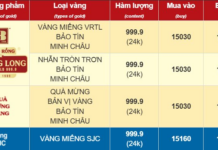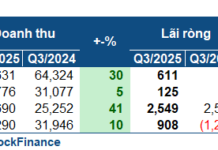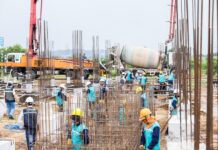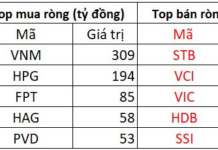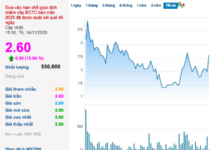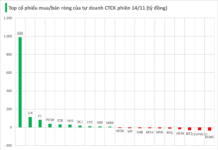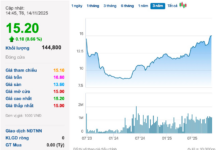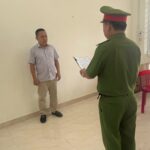On April 23, 2024, Deputy Prime Minister Tran Hong Ha signed Decision No. 333/QD-TTg issuing the Implementation Plan for the Master Plan for Exploration, Exploitation, Processing and Use of Minerals for the period 2021-2030, with a vision to 2050.
ATTRACTING RESOURCES IN THE IMPLEMENTATION OF THE MASTER PLAN
The plan aims to effectively implement Decision No. 866/QD-TTg dated July 18, 2023 of the Prime Minister approving the Master Plan for Exploration, Exploitation, Processing and Use of Minerals for the period 2021-2030, with a vision to 2050, building a roadmap of effective implementation of programs and projects to carry out the goals, tasks and solutions set out in the plan. Specify the progress, implementation steps and resources to implement programs and projects to develop policies and solutions to attract social resources in implementing the plan.
Along with that, the specific responsibilities will be assigned to ministries, branches and localities, especially regarding the settlement or reporting to competent authorities to settle problems with mechanisms and policies in the implementation process of the Master Plan;
Focus on researching to remove difficulties and obstacles to implement urgent and important works and projects belonging to priority groups such as: National defense and security works, infrastructure, transportation works… especially public investment projects, projects mobilized from social resources, infrastructure renovation and upgrading projects serving local socio-economic development.
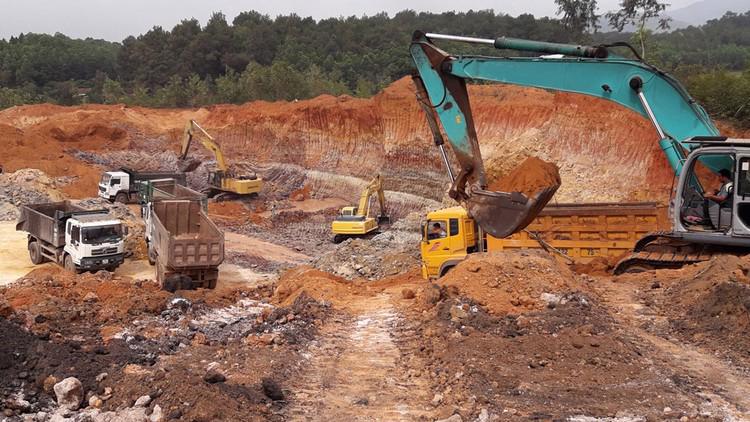
The Plan also sets out synchronous solutions to carry out to ensure the implementation of the Mineral Master Plan. In which, there is a plan to continue reviewing, amending, supplementing and perfecting the State’s mechanisms, policies and laws on minerals to overcome existing shortcomings and limitations, creating favorable conditions for enterprises to invest in mineral exploitation and processing projects, enhancing the role of responsibility of state management agencies from central to local and businesses.
Finalize and supplement policies and laws to facilitate exploration and exploitation projects associated with mineral processing projects. Strictly control exploration and exploitation activities, comply with laws on minerals and the environment, and ensure occupational safety.
Step up investment in scientific research to serve the completion of the system of national technical standards, regulations and technical regulations to improve the management, exploration, exploitation, processing and use of minerals.
At the same time, promote scientific research in mineral exploration, processing and use to maximize recovery of minerals and in-situ minerals to supply raw materials for other industries and serve the sectors of the economy…
The Master Plan for Exploration, Exploitation, Processing and Use of Minerals for the period 2021-2030, with a vision to 2050, aims at mineral resources being managed tightly, exploited, processed, and used effectively, associated with the development needs of the economy, environmental protection, adaptation to climate change and towards the goal of carbon neutrality.
For minerals with large reserves, strategy, and importance (bauxite, titanium, rare earth, chromite, nickel, copper, gold), enterprises licensed to exploit mines must have sufficient capacity and must invest suitable processing projects using advanced technology, modern equipment, and sustainable environmental protection.
The plan also emphasizes the limitation and gradual cessation of the exploitation of low-reserve, dispersed, small-scale mines, focusing mineral resources from small-scale mines/mining points into clusters of mines of sufficient scale to invest synchronously from exploration, exploitation, and processing applying advanced technology, and modern equipment.
SETTING OBJECTIVES FOR SOME IMPORTANT MINERALS
The plan also sets targets for some types of minerals with large reserves, strategy, and importance in the period 2021-2030.
Accordingly, with bauxite, exploration and exploitation must be associated with deep processing (at least until the product reaches aluminum); selection of investors to implement exploration and exploitation projects must have sufficient capacity to carry out synchronous projects from exploration to deep processing, using advanced technology, modern equipment, environmental protection, and especially the need to consider red mud disposal and treatment solutions sustainably and effectively. Businesses are encouraged to research, and apply new technologies for red mud recycling. New aluminum production projects using electrolysis technology must implement electricity prices according to the market mechanism, including encouraging the use of renewable energy.
With titanium, develop a titanium mineral mining and processing industry with a roadmap and scale suitable for each stage, and gradually establish integrated mining-selection technology complexes and titanium mineral processing industrial clusters with synchronous infrastructure. Coastal titanium projects provide solutions to ensure a balance between water sources for production and people’s daily needs, agricultural development, and aquaculture. Promote cooperation in research, technology transfer, investment in titanium exploitation and processing synchronous with deep-processing products.
Develop the industry of exploiting, processing, and using rare earth minerals synchronously, effectively and sustainably. Enterprises newly granted licenses for rare earth mineral exploitation must be associated with processing projects for a product of at least total rare earth oxides, hydroxides, salts with TREO content ≥ 95%, encouraging production to separate rare earth elements (REO), advanced technology, modern equipment, maximum recovery of associated beneficial minerals, ensuring the environment, and safety in terms of radiation.






